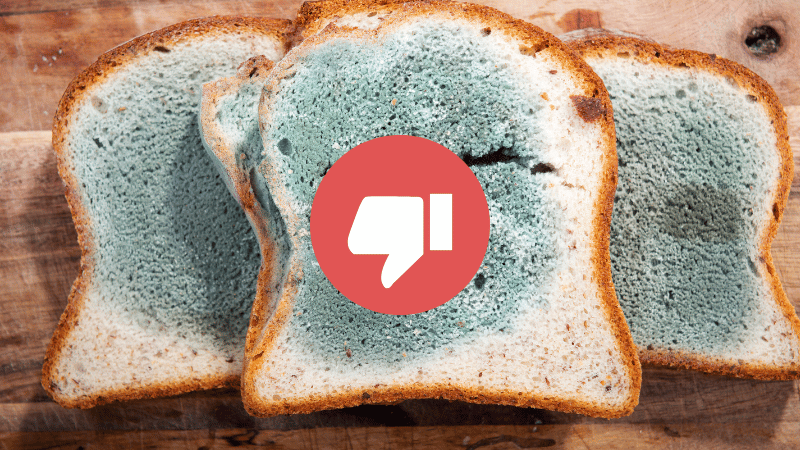Bread is a staple food that many households keep on hand, but its shelf life can vary depending on various factors. Understanding how long bread lasts in the fridge can help you maximize its freshness and prevent waste.
This comprehensive guide will explore the intricacies of storing bread in the refrigerator, equipping you with the knowledge to make informed decisions.
How Long Does Bread Last in the Fridge & Freezer

The shelf life of bread depends on various factors, including the type of bread, storage conditions, and whether it’s stored in the refrigerator or freezer.
Here’s a general guideline for how long bread can last in the refrigerator and freezer:
Refrigerator:
| Bread Type | Refrigerator Shelf Life |
|---|---|
| Fresh bread (homemade or bakery) | 3-5 days |
| Commercial bread (e.g., sandwich loaves) | 5-8 days |
| Whole wheat or multigrain bread | 4-7 days |
| Sourdough bread | 4-6 days |
| Gluten-free bread | 3-5 days |
Freezer:
| Bread Type | Freezer Shelf Life |
|---|---|
| Fresh bread (homemade or bakery) | 2-3 months |
| Commercial bread (e.g., sandwich loaves) | 3-6 months |
| Whole wheat or multigrain bread | 3-6 months |
| Sourdough bread | 3-6 months |
| Gluten-free bread | 3-6 months |
It’s important to note that these are general guidelines, and the actual shelf life may vary depending on the specific ingredients, preservatives, and storage conditions.
Additionally, bread stored in the refrigerator may become stale faster due to the dry environment, while freezing bread can help maintain its freshness for a longer period.
To extend the shelf life of bread, it’s recommended to store it in airtight containers or bags to prevent moisture loss and contamination. Additionally, slicing bread before freezing can make it easier to remove and defrost individual portions as needed.
How to Know if Bread Has Gone Bad?
Before diving into the specifics of refrigerating bread, it’s essential to recognize the signs that indicate your loaf has spoiled.

Here are some telltale signs that your bread has gone bad:
- Mold: The most obvious sign of spoilage is the presence of mold, which can appear as fuzzy green, blue, or white patches. Even a small amount of mold means the entire loaf should be discarded, as mold can spread quickly.
- Odor: Fresh bread should have a pleasant, yeasty aroma. If your bread smells sour, musty, or off, it’s likely past its prime and should be thrown away.
- Texture: Fresh bread should be soft and pliable. If it feels hard, dry, or stale, it may be past its prime.
- Discoloration: Bread that has turned an unusual color, such as a greenish or bluish tint, is a clear sign of spoilage.
Does Refrigerating Bread Prevent Mold?
Contrary to popular belief, refrigerating bread does not necessarily prevent mold growth. In fact, according to a study by the University of Wisconsin-Madison refrigeration can actually accelerate the growth of certain types of mold that thrive in cooler environments.
The study found that the most common type of mold found on refrigerated bread is Penicillium, which can grow at temperatures as low as 36°F (2°C). While refrigeration may slow down the growth of some molds, it does not eliminate the risk entirely.
Why Do People Put Bread in the Fridge?
Despite the potential for mold growth, many people still choose to refrigerate their bread for a few reasons:
- Extending Shelf Life: While refrigeration may not prevent mold entirely, it can help slow down the staling process and extend the bread’s overall shelf life by a few days.
- Preventing Dryness: The cool, humid environment of the refrigerator can help prevent bread from drying out too quickly, keeping it fresh for longer.
- Personal Preference: Some people simply prefer the texture and flavor of refrigerated bread, finding it more appealing than bread stored at room temperature.
Does Putting Bread in the Fridge Extend Its Life?
The answer to this question is not a simple yes or no. According to a study published on NCBI scientific literature, refrigerating bread can extend its shelf life by a few days, but the exact length of time varies depending on several factors:
- Type of Bread: Denser breads, such as whole wheat or sourdough, tend to have a longer shelf life in the fridge than lighter breads like white or sandwich bread.
- Packaging: Bread that is well-sealed and packaged will last longer in the fridge than an opened or improperly sealed loaf.
- Refrigerator Temperature: The colder the temperature, the longer the bread will last, but temperatures below 36°F (2°C) can increase the risk of mold growth.
On average, bread stored in the fridge can last an additional 3-5 days beyond its typical room temperature shelf life.
However, it’s important to note that refrigeration does not stop the staling process altogether, and bread will eventually become dry and less palatable over time.
Is It Better to Store Bread in the Fridge or Freezer?
When it comes to long-term storage, the freezer is generally a better option than the refrigerator for preserving bread’s freshness. Here’s a breakdown of the pros and cons of each storage method:
Refrigerator:
- Pros: Slows down staling process, prevents dryness.
- Cons: Increases risk of mold growth, shorter shelf life than freezing.
Freezer:
- Pros: Can extend shelf life by several months, minimizes risk of mold growth.
- Cons: Bread may become stale or dry after thawing, potential for freezer burn.
If you plan to consume the bread within a week or so, the refrigerator can be a suitable option. However, if you need to store bread for longer periods, freezing is recommended. When freezing bread, it’s best to wrap it tightly in plastic wrap or aluminum foil to prevent freezer burn and moisture loss.
Conclusion
while refrigerating bread can extend its shelf life by a few days, it’s important to be aware of the potential risks, such as mold growth and accelerated staling. By understanding the signs of spoilage, the effects of refrigeration, and the best storage methods, you can ensure your bread stays fresh and delicious for as long as possible.

